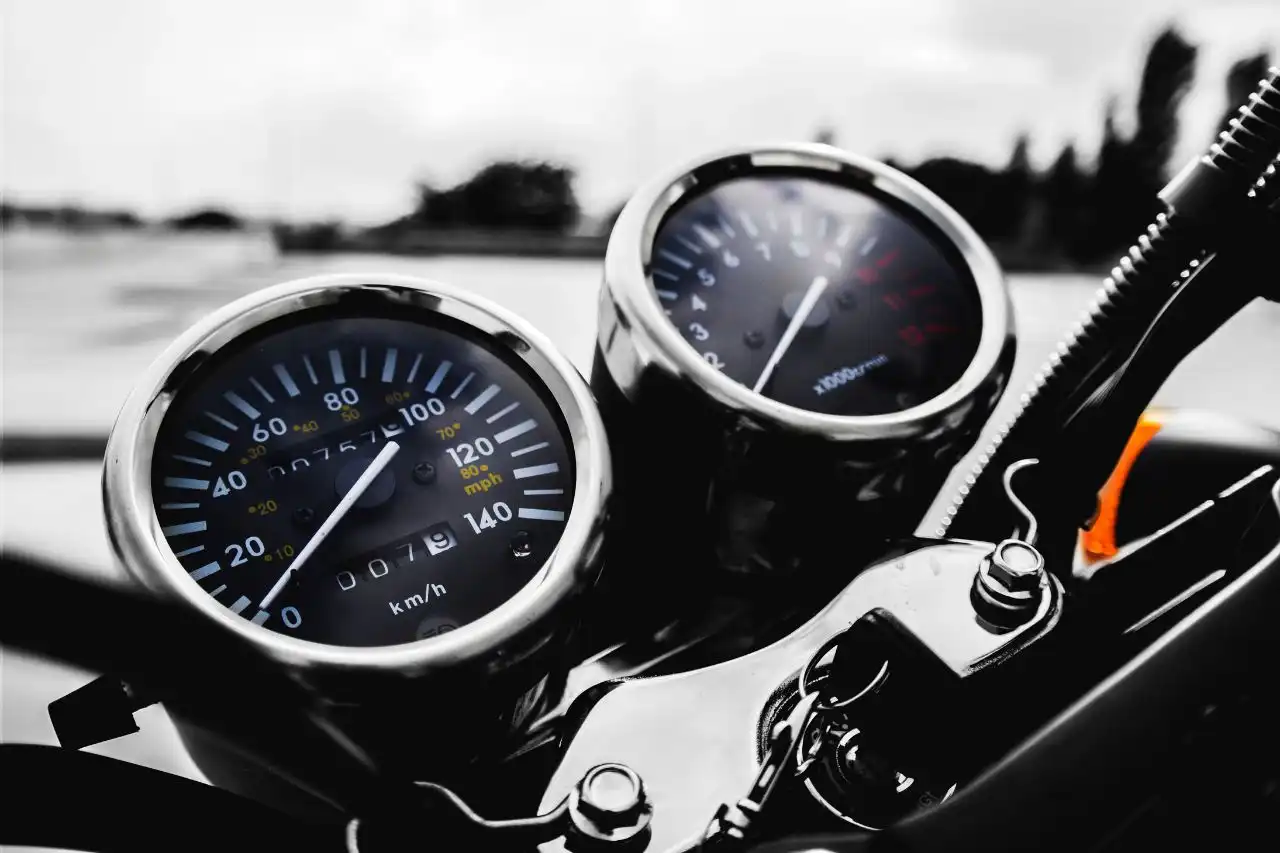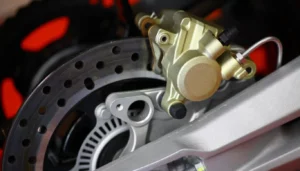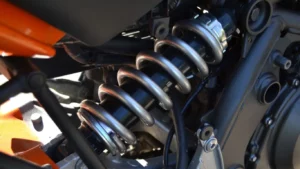Like a heartbeat in the human body, the speedometer is the pulse of your motorcycle; an essential organ that communicates the rhythm of your ride, the velocity of your voyage. When this crucial device malfunctions, it can leave you, the rider, bereft of vital information and, in some cases, on the wrong side of the law. Thus, understanding how to fix a faulty speedometer becomes a skill of paramount importance for any motorcycle enthusiast.
Picture the speedometer as the seer of your motorcycle. It tells you the tale of your speed, the narrative of your journey. It is a bridge between you and your motorcycle, built on the pillars of trust and transparency.
Common Causes of Motorcycle Speedometer Malfunction
Like a seasoned mariner navigating a tempestuous sea, a rider must rely on the integrity of their instrumentation. Amongst these, the speedometer stands as a lighthouse guiding their journey, casting light on their velocity in the unchartered waters of the open road.
However, when the beacon of this crucial gauge falters, it can feel as though you’re sailing blind into the storm. Now, let’s delve into the murky depths of the most common causes of motorcycle speedometer malfunctions.
1. Damaged Speed Sensor
A speed sensor, much like a faithful compass, guides the speedometer’s needle. It’s the key liaison between the road and your dashboard, informing the speedometer of your motorcycle’s speed. As such, any damage to the sensor can distort the readings, leading your speedometer astray. This can be caused by exposure to the elements, wear-and-tear, or even a harsh jolt from an unseen pothole.
2. Broken Speedometer Cable
Picture the speedometer cable as a sturdy rope, pulling information from your wheels to your speedometer. This cable, over time and long voyages, can snap or fray. In such instances, the communication line is severed, leaving your speedometer bereft of any data to display.
3. Faulty Instrument Cluster
Imagine the instrument cluster as the captain’s cabin, housing all the key navigational tools. Within this cabin, the speedometer, tachometer, and other gauges live. If the instrument cluster itself malfunctions, it can cast a ripple effect, disrupting the function of your speedometer.
A motorcycle’s speedometer is like a beacon in the night, guiding the rider through the twists and turns of the journey. When that beacon flickers and fails, understanding the common causes can bring it back to life.
4. Worn Out Speedometer Drive Gear
The speedometer drive gear, akin to a ship’s wheel, steers the speedometer’s readings. Wear and tear can age this gear, causing it to slip or misalign, thereby leading to erratic or non-functioning speedometer readings.
| Issue | Description |
|---|---|
| Damaged Speed Sensor | Damage to the sensor due to exposure to the elements, wear-and-tear, or a harsh jolt. |
| Broken Speedometer Cable | A cable that has snapped or frayed over time, severing the communication line between the sensor and speedometer. |
| Faulty Instrument Cluster | A malfunction in the instrument cluster that disrupts the function of the speedometer and other gauges. |
| Worn-Out Speedometer Drive Gear | A worn-out gear that slips or misaligns, causing erratic or non-functioning speedometer readings. |
Understanding these common issues is the first step towards navigating the storm and restoring the guiding light of your speedometer. Stick with us, as we journey towards the safe harbor of resolution, in the next section: How to Fix Your Motorcycle Speedometer.
Must Read:
How to Diagnose Motorcycle Speedometer Problems
Like a wandering sage deciphering the mysteries of the universe, diagnosing the problems of a motorcycle speedometer requires a keen mind, a steady hand, and a touch of mechanical intuition. In the labyrinth of gears, cables, and electronic mechanisms, it is in this complex dance of machinery where your journey begins.
Step 1: Visual Inspection
Commence with an uncomplicated visual inspection. The speedometer, like a mirror, often reflects the problems hidden within its depths. Look for any visible signs of damage on the speedometer face, such as cracks or fading numbers, as these can indicate deeper issues.
Remember, the external manifestation of a problem often whispers of the turmoil within.
Step 2: Check the Speedometer Cable
An intimate liaison exists between your speedometer and its cable, akin to the bond between the moon and the tides. If this bond is broken, chaos ensues. Detach the speedometer cable from the speedometer head. Inspect it for any signs of fraying or breakage. If found, your quest for the problem is over, and a replacement is the next step on your path.
Step 3: Inspect the Speedometer Gear
The gear is the heart of the speedometer, pulsating with the rhythm of your motorcycle’s velocity. Like a physician examining a patient’s heartbeat, turn the speedometer cable end with your fingers. If the needle does not move, the gear within needs your immediate attention.
Step 4: Electronic Speedometer Check
Motorcycles of the modern era often embrace the allure of digital technology. An electronic speedometer is a complex dance of signals and circuits, a symphony composed in the language of binary. To diagnose these, a multimeter becomes your wand, probing the wizardry of electrical engineering. Check the voltage and resistance according to the manual’s specifications.
Step 5: Consult the Motorcycle Manual
When all else fails, the motorcycle manual remains your steadfast guide. This chronicle, scribed by those who breathed life into your mechanical steed, provides the roadmap to understanding the nuances of your speedometer’s function.
The motorcycle manual is a tome of knowledge, a compendium of wisdom etched in ink and paper.
Diagnosing the problem is but the first step in your journey to fix your motorcycle speedometer. The path to rectification may be winding and laden with challenges, but with patience and perseverance, you will restore harmony to your mechanical companion.
Tools You’ll Need to Fix Your Motorcycle Speedometer
Let us embark on a journey akin to the preparation of a knight before his quest; we need to gather our tools, the vital armor for this mission to restore the lifeblood of your motorcycle – its speedometer. These are the weapons to arm ourselves with:
- Phillips Screwdriver: Just as a knight needs a sword, your primary weapon is the ever-reliable Phillips Screwdriver. This versatile tool will lead your charge in disassembling and reassembling parts of your bike.
- Wrench Set: The wrench set is your shield. It protects you from the struggle of loosening and tightening bolts, holding your ground firm.
- Needle-nose Pliers: Sometimes, your quest will call for precision, and the needle-nose pliers are your answer—much like a knight’s dagger, for those close combat situations.
- Electrical Tape: This is your bandage, healing any exposed wires, and preventing further damage.
- Wire Strippers: Consider this your wizard’s staff, able to conjure miracles with wires and connections.
- Multimeter: The multimeter is your sage’s crystal ball, guiding you through the mystery of electrical connections, always showing you the right path.
Remember, just as a knight cannot triumph without his armor, a mechanic is only as good as his tools. Be well-equipped, and half the battle is already won.
Parts You’ll Need for the Repair
We’ve mustered our tools, but this battle also calls for reinforcements. It’s time to gather the parts that will form the core of your repaired speedometer:
| Part | Description |
|---|---|
| Speedometer Cable: | This is your mighty steed, connecting your speedometer to the gearbox, and transmitting the speed readings. |
| Speed Sensor: | This unsung hero quietly monitors your wheel speed and sends the information to your speedometer. A true guardian! |
| Speedometer Drive Gear: | The drive gear is the heart of your speedometer, turning your mechanical energy into readable speed data. |
A well-prepared mechanic, like a well-prepared knight, holds the power to overcome any challenge. Gather your tools and parts, and you’ll be well on your way to conquering this task.
Step-by-Step Guide to Fixing a Motorcycle Speedometer
Like a reliable friend, your motorcycle speedometer guides you through the rhythmic dance of the speedways, whispering the tales of your velocity in your ear. But what happens when this trustworthy companion falls silent? A faulty motorcycle speedometer can be quite the bane of a joyful ride. However, worry not, for we shall journey together into the realm of speedometer repairs.
Remember, dear reader, that this guide is a map, and like all maps, it serves as a direction and not a mandate. The complexity of each step may vary depending on the model and make of your motorcycle. Nevertheless, with a dollop of patience and a dash of effort, you can restore your motorcycle speedometer back to its former glory.
The Tools of the Trade
Before we set sail on this odyssey of repair, it is imperative to gather the tools required. Needless to say, the correct tools are like keys, unlocking the door to a successful repair.
- Set of Screwdrivers: For the dismantling and reassembling of the speedometer casing.
- Multi-Meter: A handy tool for testing voltage and continuity.
- Compressed Air or Cleaning Spray: To cleanse the system of any dust or debris.
Stage 1: The Preliminary Examination
We begin our journey by examining the surface of the problem, like an explorer surveying the land before venturing in.
- Firstly, analyse the physical connection between the speedometer and the motorcycle. Check for any visible damage, wear, or loose connections. If such problems exist, take remedial measures.
- Secondly, test the voltage input to the speedometer using your multi-meter. A lack of adequate voltage could be the root cause of the problem.
Stage 2: The Inner Expedition
Delving deeper into the labyrinth of the speedometer, we step into the realm of the unseen.
- Using your screwdriver, gently dismantle the speedometer casing. A word of caution, dear reader, as the inner components can be quite delicate.
- Closely inspect the inner circuitry and mechanical parts for any damage or corrosion.
- Use your cleaning spray or compressed air to rid the system of any dust or debris, which can often be the unseen culprits of malfunction.
Stage 3: The Restoration
Now that we have gathered the knowledge of the problem, it is time to restore the speedometer to its rightful state.
- If the problem lies in the circuit board, it may require expert assistance. However, if the problem is related to a loose or damaged component, it may be within the reach of your repair skills.
- Reassemble the speedometer carefully, ensuring all parts are correctly placed and all screws are tightly secured.
- Test the speedometer for functionality.
As with any journey, the path to repairing a motorcycle speedometer can be fraught with challenges. However, with a map in hand and a brave heart, you can conquer this task.
When to Seek Professional Help for Motorcycle Speedometer Repairs
As a rider, you are the master of your motorcycle, the conductor of its symphony. Yet, even the most skilled of masters can find themselves at the mercy of their own instrument. The speedometer represents the heartbeat of your motorcycle, pulsating with the rhythm of your ride. When it falters, it’s crucial to diagnose the issue not only for your safety but for the longevity of your beloved machine.
“The speedometer is not merely a device, but a trusty companion whispering the tempo of your journey.”
Recognizing the Signs of Trouble
Being intimately familiar with your motorcycle’s behavior is paramount. Recognizing the signs of a malfunctioning speedometer can be as subtle as discerning the slight off-key note in a beautiful symphony. Let’s decipher those subtle signs together:
- Erratic readings: If your motorcycle’s speedometer needle jumps around or gives inconsistent readings, this may be a sign of a problem.
- Zero reading: If the needle does not move at all when you’re riding, your speedometer might be in distress.
- Incorrect readings: If the speedometer’s readings do not match the speed you’re feeling, trust your instincts. Your speedometer might be out of tune.
Assessing the Gravity of the Situation
A malfunctioning speedometer does not always necessitate a visit to the motorcycle doctor. Sometimes, it’s a minor hiccup that can be fixed with a few handy tools and a sprinkle of patience. However, there are times when your motorcycle’s heartbeat requires the expertise of a professional.
| Minor Issues | Major Issues |
|---|---|
| A loose or disconnected cable | Internal speedometer damage |
| Dead battery | Faulty speed sensor |
| Blown fuse | Damaged drive gear |
If your speedometer’s issue lies within the ‘Major Issues’ column, then it’s time to seek professional assistance. A skilled technician not only has the tools but also the experience and knowledge to bring your speedometer back to harmony.
In conclusion, remember: your motorcycle is an extension of you, a mechanical symphony under your command. When a note falls flat, when the rhythm falters, it’s up to you to rectify the situation or seek the maestro’s assistance. Let the music play on, rider.
Conclusion
After navigating the complex world of motorcycle speedometer repair, you should be ready to take your iron horse back on the road. As you disassemble your speedometer, carefully examine for issues, and methodically fix any defects, your journey should resonate within you like a well-tuned engine. This difficult path gives you self-sufficiency and control over your mechanical dominion, but it also has risks.
Dear reader, we part ways, but not before reflecting on our journey together. Remember the wisdom you gained as you stand on the brink of your new skills. A repair today is just one of many in the coming days, months, and years. The ride and understanding the beast beneath you are the road’s wisdom. May your repaired speedometer tick as a sweet reminder of your triumph over adversity as you conquer miles in the future.






